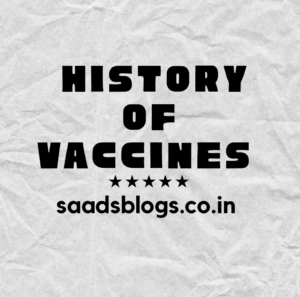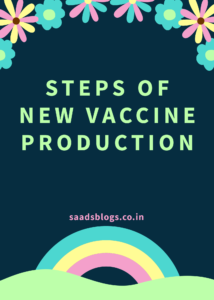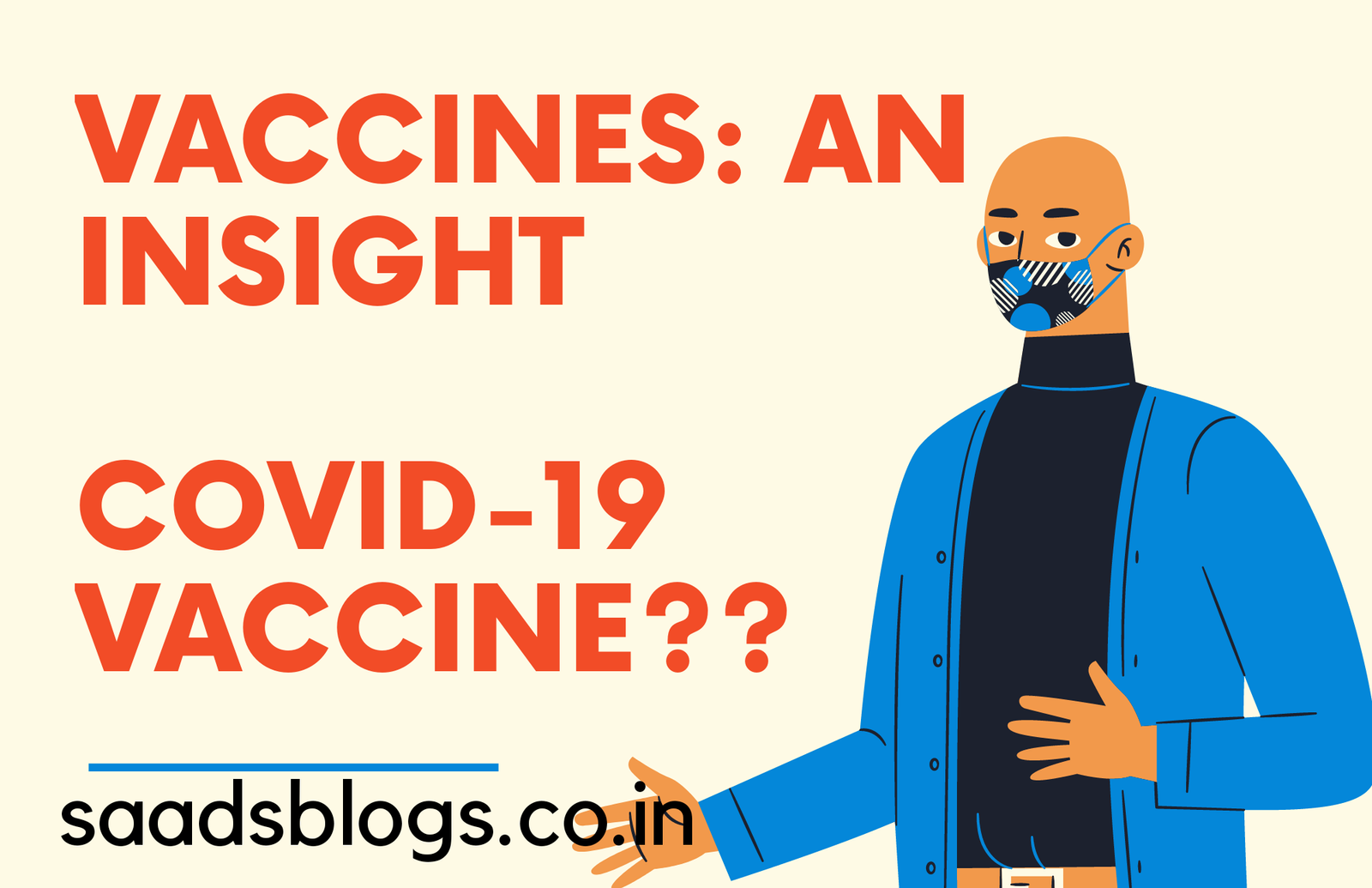Vaccines: An Insight
Vaccine is a particle/organisms/subunit of organisms used to stimulate the immune system and produce antibodies against these organisms.

History:
1.In 1796, Edward Jenner was the first scientist to inoculate cowpox virus in a 13 years old boy and showed immunity against smallpox.
2.In 1798, Cowpox vaccine was used as the first vaccine made against smallpox by Edward Jenner.
3.In 1885, Louis Pasteur invented vaccine for rabies.
4.In 1897, Louis Pasteur invented vaccine for cholera.
5.In 1905, Louis Pasteur invented vaccine for anthrax.
6.Between 1905-1918, Calmette and Guerin invented BCG (Bacillus Calmette Guerin) for tuberculosis. In 1920 first BCG vaccine given to human.
7.In 1923, Alexander Glenny, invented vaccine against tetanus.
8.In 1926, Diptheria was invented.
9.In 1950-1985 polio vaccine was invented. Both Salk and Sabine, killed and inactivated vaccine respectively were invented.
10.In 1963, John Enders and his colleagues invented vaccine for measles, In 1968, Maurice Hilleman and his colleagues developed even improved and weaker strains of measles.
11.In 1969, Dr. Baruch Blumberg and Millman invented a vaccine for hepatitis B.
These are the important developments in the field of vaccines.

Types of vaccines:
There are four different types of vaccines available.
1.Killed vaccine/Inactivated vaccines:
These types of vaccines are made by heating or chemical treatment of organisms making them avirulent.
Eg: 1. Inactivated polio vaccine(IPV).
- Whole-cell pertussis (wP).
- Live attenuated vaccines:
These vaccines are made by the weakening of organisms by under laboratory in order to make less virulent. When it is given to humans they will cause no or weak disease.
Eg. Viral vaccines:
1.OPV(Oral polio vaccine).
2.Measles.
3.Yellow fever.
4.Rotavirus.
Bacterial vaccine:
1.BCG for tuberculosis.
3.Subunit vaccines:
These vaccines are made by a part of organisms. The surface of organisms usually taken for the production of subunit vaccines.
Eg – Virus
1.Hepatitis B.
2.Human papillomavirus(HPV).
Bacteria:
1.H. influenza type B.
2.Streptococcus pneumonia.
3.Neisseria meningitidis.
Parasite:
1.Malaria.
4.Toxoid vaccines:
These types of vaccines are made by the use of toxins made by the organisms. They create immunity to the parts of the organisms that cause disease instead of the organism itself.
Eg: 1. Diphtheria.
- Tetanus.

Ideal vaccine:
1.100% protection against the disease.
2.Zero adverse effects.
3.Easily administered.
4.Cost-effective.
5.Immunityshould be long-lived.
6.Thermal stable.
7.Multivalent
To date, not a single vaccine has met these requirements. Vaccines are used when the benefits are outweighs the adverse effects.

Steps of new vaccine production:
1.Exploratory stage.
2.Pre-clinical stage.
3.Clinical development.
4.Regulatory review and approval.
5.Manufacturing.
6.Quality control.
These are the stages for vaccine development.
Clinical stage/ Development is further divided into three phases.
1.Phase l – A very few volunteers is given trail vaccine.
2.Phase ll – Trails is extended to people who are intended for this vaccine.
3.Phase lll – Here vaccine is been given to more than thousand people and efficacy and safety tested.
4.Phase lV – Here vaccine is approved and licensed.
Approval authority:
The U.S.(FDA’s) Food and Drug Administration’s Center for Biologics Evaluation and Research (CBER).
Hope you like my Blog. Please comment below.
Dr Saad Mohammad Athanikar.
Orthopedic surgeon.
Saadsblogs.co.in



Finely written
When COVID 19 vaccine will come?
In 2021
ok.. hope so
Nice info
Well presented and precise useful information
Thank you sir.
Thank you taj
Thank you
Very nice information doctor
Very useful
Keep posting such valuable knowledge and spread Awareness
Thank you so much
Thank you
Well written and very informative Saad,
Thank you sir
Nice info
Nice.
Thank you
Thank you
I’m impressed, I need to say. Actually hardly ever do I encounter a blog that’s both educative and entertaining, and let me tell you, you’ve got hit the nail on the head. Your thought is excellent; the difficulty is one thing that not sufficient individuals are talking intelligently about. I’m very joyful that I stumbled across this in my seek for something regarding this.
Thank you for your good words
Nice 👍
MashaAllah nice 👍
Thank you
Thank you